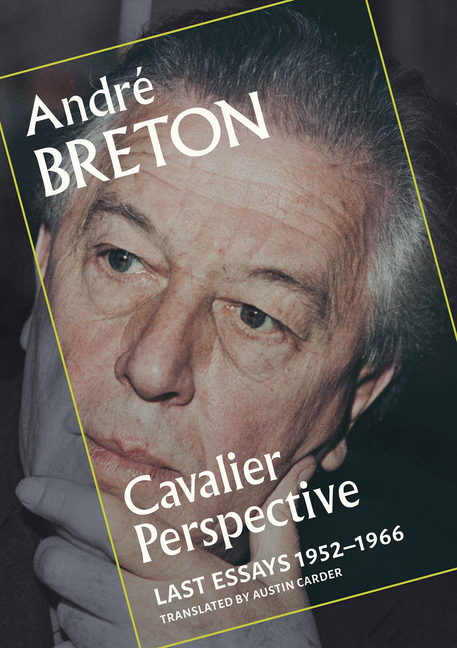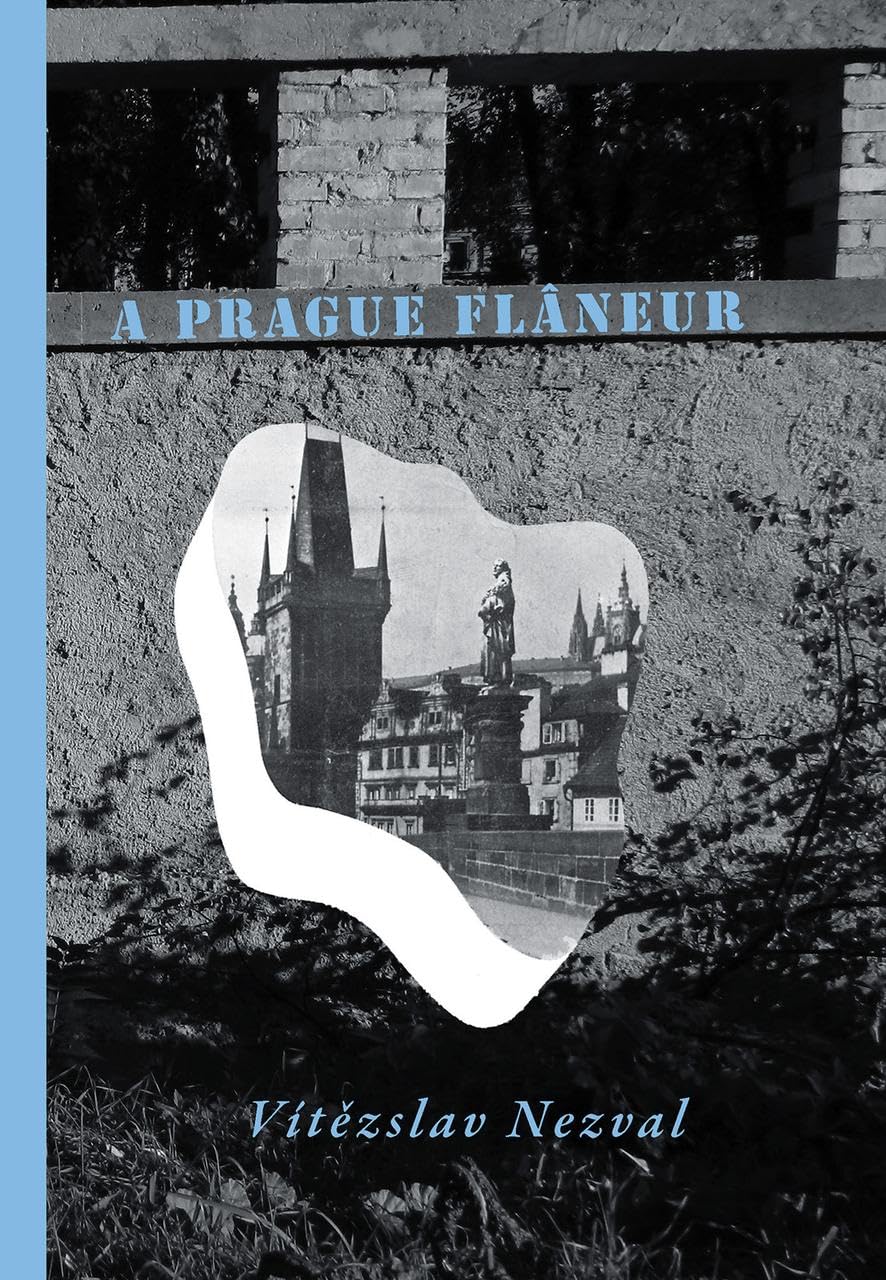Last Essays, 1952-1966
André Breton
Translated by Austin Carder
City Lights Publishers ($18.95)
In 1946, some six years after fleeing Fascist France for New York City, André Breton returned to post-war Paris. He sought not only to resume surrealist activities with old and new comrades, but also to situate Surrealism within the new political climate of the Fourth French Republic (1946-1958) and the new cultural zeitgeist attuned to Existentialism and its allies.
By 1952, this situation had not changed in great detail. Marginalized by the power of the Communist parties that now steered cultural production and sidelined politically by his critiques of Stalinist abuses that the majority refused to acknowledge (including summary executions and exile to the Gulag), Breton did not diverge from his aim to root surrealist activity in the three reciprocating realms that were his beacons prior to the war: love, freedom, and poetry. As he explained in the 1952 essay “Link” that opens Cavalier Perspective: Last Essays 1952-1966, the emotional catalyst that inspires surrealist activity resides in the “realm of desire which everything today is conspiring to veil.” His advice on how best to respond, however quick it might seem, does not diminish the goal: “explore it in every direction until it reveals the secret of how to ‘change life’” [as Rimbaud demanded].
Austin Carder’s translation of these final volleys from Breton comes at a significant moment: The international celebration of the centenary of the Surrealist Manifesto in 2024, which prompted numerous exhibitions both retrospective and contemporary, along with the 2025 publication in English of Breton’s late work Magic Art (Fulgur Press) and a new translation of his landmark early work Nadja, make a ready stage for this book, his gathering of shorter essays published prior to his death in 1966.
Diverse in character, these forty-one selections reveal Breton’s personal voice and richly sculpted style. While they are not poems, of course, they are clearly texts written by a major poet, one whose sensitivity to nuance and clarity when opposing oppressive conditions kept his viewpoints—including on the Algerian Revolution (which he supported) and France’s ongoing colonialism (which he detested)—sharp and alive.
Cavalier Perspective contains prefaces, reviews, letters, interviews, poignant eulogies, and public speeches Breton gave during the fourteen years it covers. Certainly these pieces do not exhaust his entire output, but they provide what he felt was worth a reader’s time; Breton was always a fine anthologist. Tracking the issues that Breton dealt with and the people he discussed, the majority of whom he knew well—Antonin Artaud, Robert Desnos, Francis Picabia, George Bataille, André Gide, Paul Valéry, Guillaume Apollinaire, and others—they clarify the stakes at play and the risks involved.
For Surrealism that meant one thing, as Breton expresses in “At Long Last” from 1953: total refusal to join any camp, whether cultural or political, powerful or not. He called for sustaining surrealist group activity with younger artists, filmmakers, and writers joining those of the pre-war group who remained (death, exclusion, and defection having taken several). In brief, with two world wars and multiple genocides to prove it, the myths and mores that founded Judeo-Christian society were bankrupt (one might observe that a similar situation prevails for us now) and something new was needed. The effect was a broadening of Surrealism’s intellectual compass as indigenous cultures took center stage along with Western esotericism (alchemy and astrology especially).
The essays range widely in subject matter. “You have the floor, young seer of things . . .” (1952) celebrates the audacity of youth, as Breton recounts coming up with the initial artistic revolts of the 20th Century. “Stalin in History” (1953) offers a cutting response to the dictator’s death, in which Breton portrays Stalin this way: “Starting from unlimited freedom, I arrive at unlimited despotism.” In “Letter to Robert Amadou” (1954), Breton discusses the critical avenues opened up by psychoanalysis when considering art such as de Chirico’s painting The Child’s Brain, which profoundly influenced early Surrealism. That same year gives us three texts devoted to a new surrealist game called “The One in the Other,” a kind of riddling that forefronts analogical thought to socialize poetic discourse, and “Everyday Magic” (1955) consists of journal entries and reflections on chance events that occurred over six days—the kind of curious happenstance that uncovers hidden confluences between our exterior and internal worlds.
No matter the topic, striking insights are peppered throughout Cavalier Perspective: for example, in the 1956 piece “Embers at Ceridwen’s Cauldron” (written as a foreword to a book on the ancient Celts), Breton celebrates the “originality of Gallic art” contra Greek ideas of beauty at a time when such thinking was rare. “The Language of Stones” (1957) presents a charming, thoroughly researched piece on the history and pleasures of visionary minerology—when gazing at a stone induces a state of trance followed by the same “hyper-lucidity” that feeds poetic consciousness. In “Flora Tristan” (1957), Breton celebrates the legacy of Gauguin’s maternal aunt; several years prior to the publication of The Communist Manifesto, she advocated for workers (men and women both) to organize against their submission to the system of alienated labor that Marx would soon expose on a wide scale. (The relationship between this revolutionary tradition and esotericism becomes clear through Abbé Constant, later known Eliphas Levi, a theorist of magic who published Tristan’s The Emancipation of Women, or the Pariah’s Testimony in 1845, one year after her death).
“Phoenix of the Mask” (1960) is a significant statement on Breton’s affinities with indigenous cultures for whom ritual and ceremony infuse daily life. Along the way, he points out that while scholarship has advanced, it has done so through an assumed objectivity that keeps scholars distant from the experience they study—of particular relevance when the topic is how wearing a mask empowers and transforms the personality.
Other compelling texts lead to the finale, “Credits” (1966), an introduction to the eleventh international exhibition of Surrealism titled “L’Ecart Absolu” (“Absolute Divergence”). There are two lines in “Credits” which clarify the point of the surrealist adventure: “Reality must be pierced through in every sense of the word” and “I want to point the mind in an unfamiliar direction and awaken it.” For Breton, it was all truly that simple.
Austin Carder’s translation lends to Breton’s prose the colors it needs in English. Carder also provides a back matter “Note” that details the glue that binds the essays in the book into a shifting, absorbing, multileveled field. The book contains two introductions: one by City Lights editor Garrett Caples, and, thankfully, the original introduction to the 1970 French edition by Marguerite Bonnet. Finally available in English, Cavalier Perspective: Last Essays 1952-1966 delivers something precious from the founder of Surrealism.
Click below to purchase this book through Bookshop and support your local independent bookstore:
Rain Taxi Online Edition Fall 2025 | © Rain Taxi, Inc. 2025



